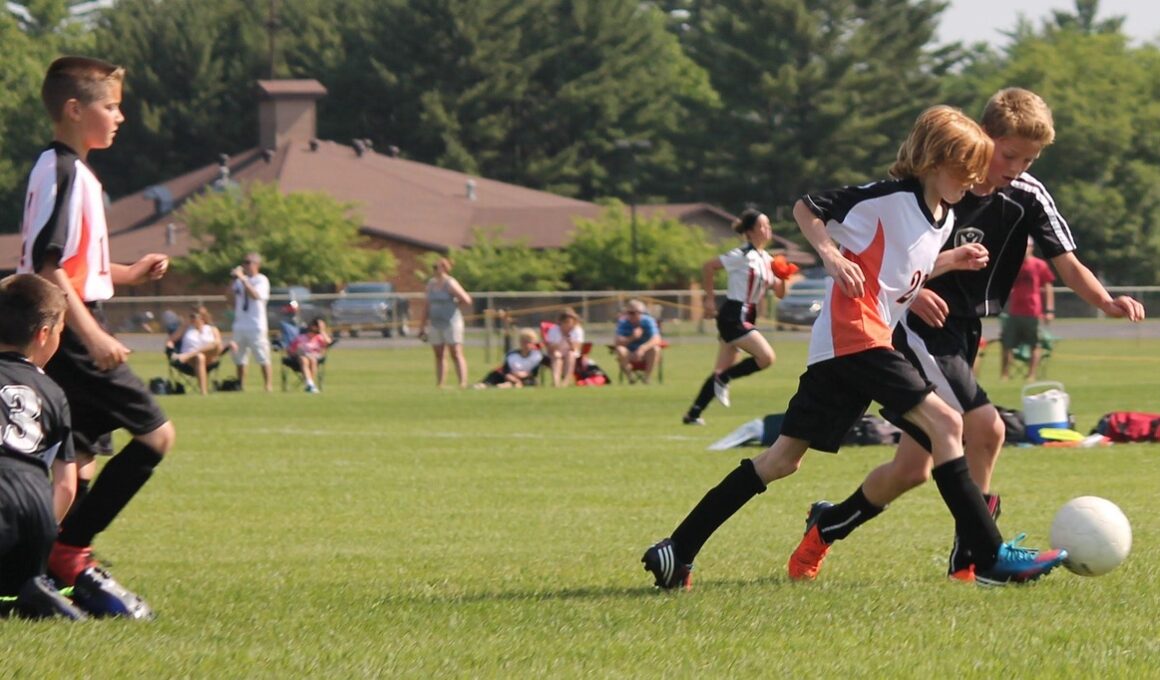Sports and Academic Achievement: What the Research Says
Physical activity has long been celebrated for its myriad benefits on health. Numerous studies indicate a strong correlation between physical fitness and academic performance among children and adolescents. Engaging in sports helps develop essential skills such as discipline, teamwork, and time management, which can positively influence academic commitment. Furthermore, active participation in sports creates a structured routine that often extends to academic activities. This adherence to a schedule nurtures better study habits, as students learn to allocate time effectively. Brain-based research has also demonstrated that exercise boosts cognitive functions that are crucial for learning, including memory, attention, and problem-solving capabilities. Schools that emphasize physical education and extracurricular activities report higher levels of student motivation and enhanced grades. These academic improvements manifest across various subjects, suggesting that the benefits of sports extend well beyond physical prowess. By participating in organized sports, students cultivate a passion for health that lasts a lifetime, reinforcing the idea that fitness is integral to overall development. Thus, investing in kids’ sports is investing in their future academic success. The significant evidence warrants further exploration into leveraging fitness as a fundamental component of education.
Schools are increasingly recognizing the link between sports and academic achievement. Many institutions have incorporated physical training into their curriculum, enhancing cognitive abilities essential for learning. Physical education programs not only provide students with necessary motor skills but also improve self-esteem and foster social interactions among peers. By building confidence through sports, students can apply that self-assuredness into classrooms, fostering improved academic performance. The integration of physical activity within the school day has resulted in overall healthier student bodies more confident in both mental and physical capacities. Research shows a boost in attendance rates and reduction in behavioral issues, leading to a more conducive learning environment. Furthermore, the release of endorphins during physical activities can combat stress and anxiety, which often impede academic performance. When students are less stressed, they can focus better on their studies, resulting in higher grades. Incorporating brain breaks and active learning strategies into lessons nurtures an engaging learning atmosphere. By blending fitness with academics, schools not only promote a well-rounded education but also equip students with vital life skills. This harmonious relationship between sports and educational achievement underlines the importance of maintaining an active lifestyle.
Benefits of Physical Activity on Cognitive Function
Scientific studies underscore the positive impact physical activity has on cognitive function. Exercise increases blood flow to the brain, which aids in neurogenesis, the creation of new neurons crucial for memory retention and learning. Moreover, sporting activities cultivate essential skills necessary for navigating academic challenges, including goal-setting and strategic thinking. Enhanced concentration and academic performance can also be attributed to regular engagement in physical activities, as exercise stimulates the release of neurotransmitters that promote better communication between brain cells. Regular sports participation improves executive functions, such as planning, organization, and focus, which are vital for academic success. Better memory and faster information processing also result from physical activity, translating to improved grades across subjects. Participation in athletics has been associated with higher test scores, revealing that kids who play sports often outperform their peers in various academic measures. This relationship emphasizes that students should be encouraged to participate in sports not solely for physical health but as a mechanism for potentiating educational success. As we advance our understanding of these links, it’s imperative to foster environments where fitness and academic growth coexist harmoniously.
In addition to cognitive benefits, sports participation encourages teamwork and social skills. When youths engage in team sports, they learn to value collaboration, develop communication skills, and appreciate diverse perspectives. These experiences are critical as they mimic real-life scenarios, enhancing interpersonal skills that benefit academic settings. Moreover, healthy relationships fostered through sports can improve students’ emotional well-being, contributing to a more positive attitude towards learning. Friendships formed on the field often translate into supportive relationships in the classroom, bolstering motivation and engagement. Such connections can be especially vital for students who may feel isolated or struggle academically. Notably, being part of a team also helps develop resilience, as athletes learn to handle both wins and losses gracefully. This emotional intelligence fosters a growth mindset, encouraging kids to tackle academic challenges with a similar perspective. Teachers and parents should advocate for sports participation as a supplement to academic efforts, recognizing their interconnectedness. Schools that promote inclusivity within their athletic programs pave the way for leadership skills while simultaneously improving overall student morale and classroom dynamics, highlighting the importance of a comprehensive education.
The Role of Extracurricular Activities
Extracurricular activities play a crucial role in combining physical fitness and academic achievement. Involvement in clubs, teams, and other organized activities extends the benefits of sports beyond the field. These activities not only enhance students’ fitness levels but also refine organizational and leadership capabilities essential in both education and life. Students who engage in extracurricular sports demonstrate improved time management skills, balancing school responsibilities with their athletic commitments. Often, these individuals exhibit stellar attendance records, reflecting their dedication to both sports and academics. Participation in extracurricular activities also fosters a sense of belonging, reducing feelings of anxiety and depression that can hinder academic performance. This sense of community encourages individuals to seek help and support, both academically and socially. Additionally, opportunities for scholarships based on athletic performance can incentivize students to pursue their studies diligently while excelling in sports. Many successful professionals attribute their organizational skills and work ethic to their involvement in sports during their formative years. Thus, schools fostering diverse athletic and extracurricular programs provide valuable resources that bridge the gap between fitness and academic success.
Understanding the importance of a healthy balance between sports and academics is key for educators and parents. Setting realistic expectations and encouraging children to pursue their passions is essential. Children should be allowed to explore various sports and activities to find what resonates with them, promoting lifelong fitness habits. However, it is equally important to stress that academics remain a priority. Encouraging goal-setting and time management can help students balance both responsibilities effectively. This synergy between sports and academics creates a supportive environment where children can thrive. It is vital to celebrate achievements in both areas, focusing not only on grades but also the discipline and effort put forth in athletics. Parents and educators must advocate for students’ engagement in sports while simultaneously motivating them towards academic excellence. Schools can implement programs that integrate physical activity with academic learning, demonstrating the benefits of this holistic approach. By fostering a culture that prioritizes both fitness and learning, we empower students to become well-rounded individuals. Emphasizing this balance leads to not only healthier students but also more successful learners, preparing them for future challenges.
Conclusion: A Holistic Approach
In conclusion, the evidence linking sports participation with academic achievement underscores the importance of fostering a holistic approach to education. Schools should aim to nurture students both physically and academically, recognizing the interdependence of these facets. Prioritizing sports and physical education enhances children’s ability to concentrate, boosts their self-esteem, and instills a sense of teamwork that is invaluable in academic and professional settings. With increasing awareness of this relationship, education systems must incorporate comprehensive physical programs that support cognitive development. Families and educators should encourage active lifestyles, creating an environment where sports and academic pursuits are valued equally. This balance enhances well-being and develops critical life skills that benefit students well into adulthood. As more research highlights the advantages of regular physical activity on learning outcomes, the integration of sports into educational frameworks becomes imperative. In doing so, we set the stage for a generation of healthier, more engaged, and academically successful individuals. Sports should not merely be viewed as an extracurricular or optional component but as an integral part of the learning journey. The future of our children’s education depends on this holistic vision for their development.
Investment in children’s sports programs yields significant returns in academic performance and overall well-being. As studies highlight the correlation between physical activity and cognitive development, it is clear that prioritizing sports can create a more enriching educational experience for all students. Recognizing this connection will pave the way for initiatives that support youth fitness in schools and communities alike. Environments that sponsor a love for both academics and athletics cultivate a sense of responsibility and resilience in students, equipping them for future challenges.





